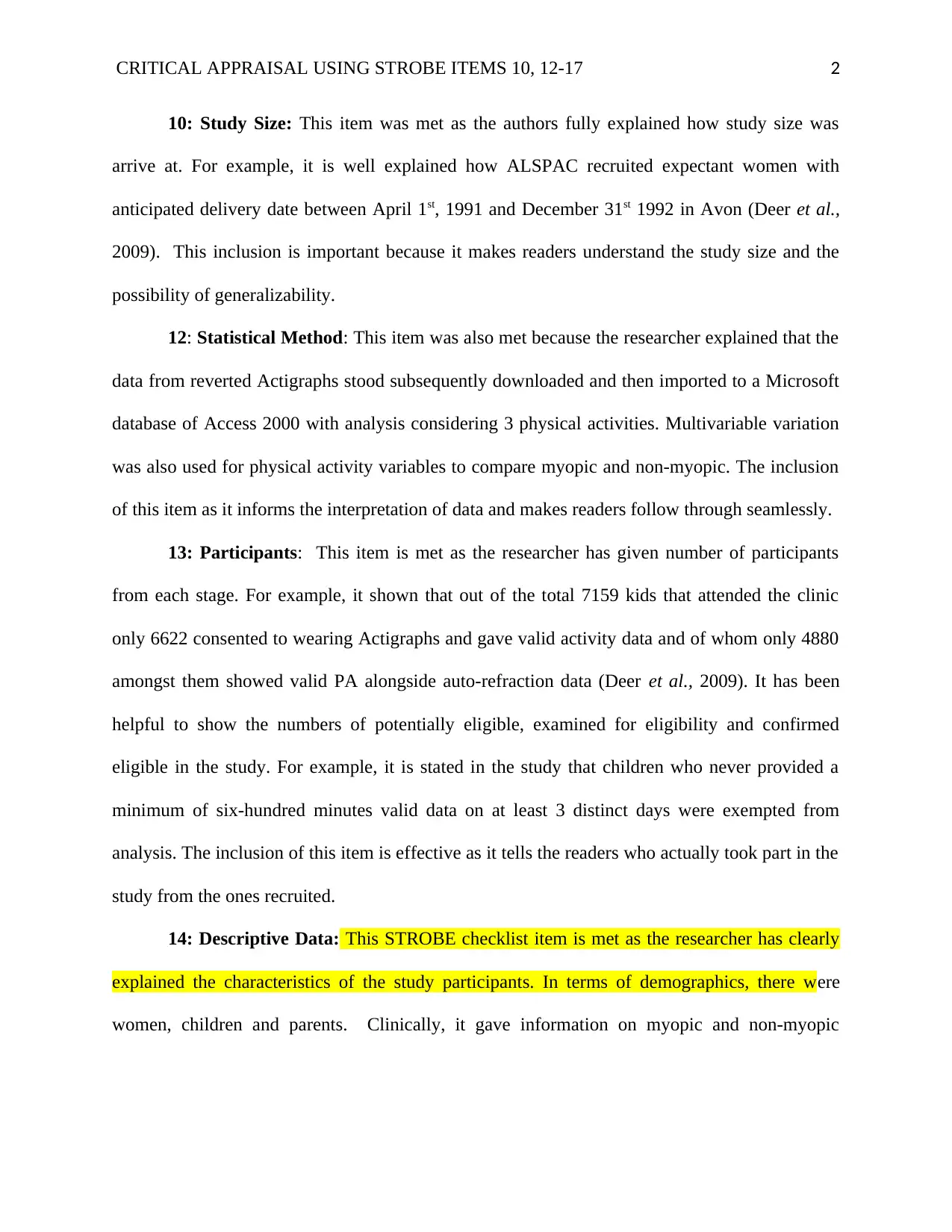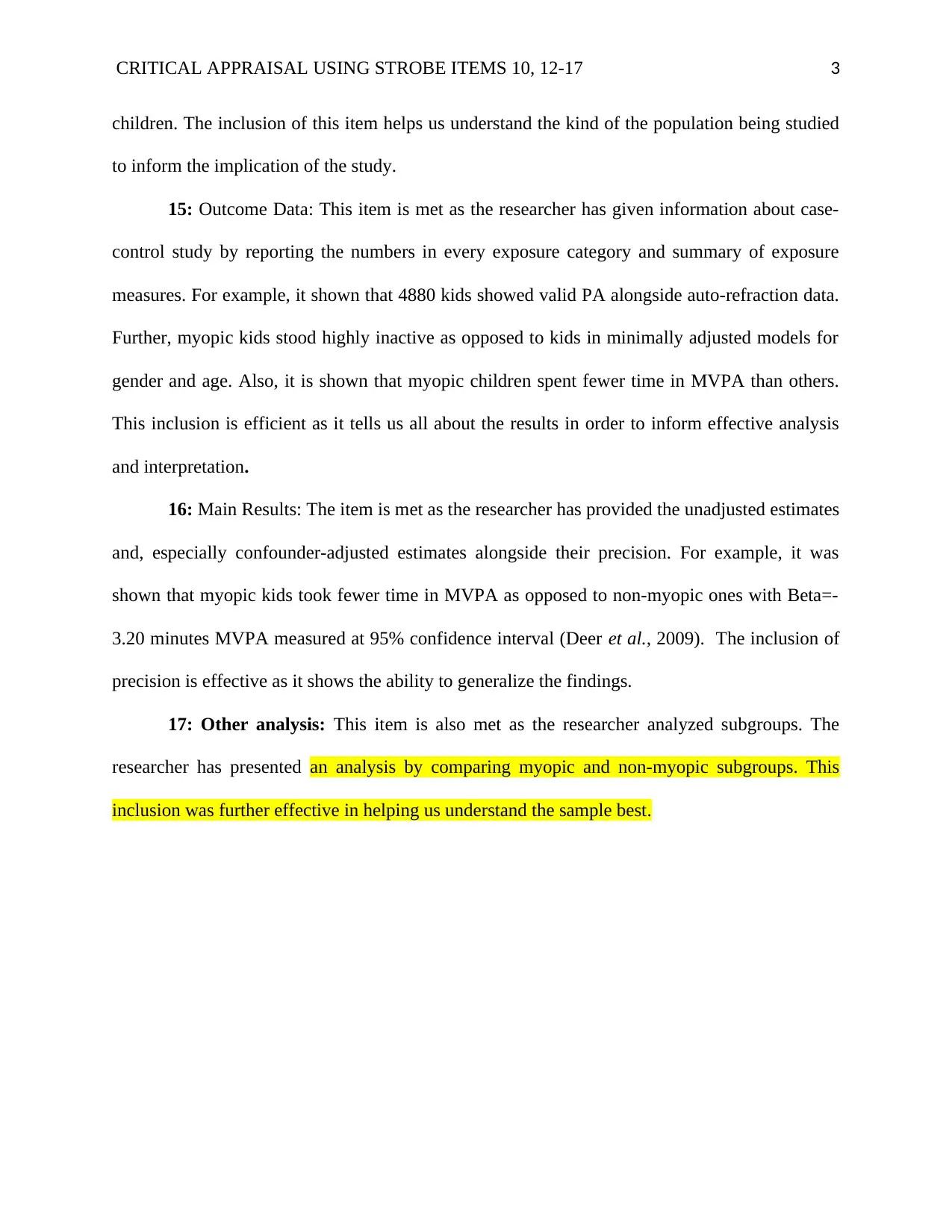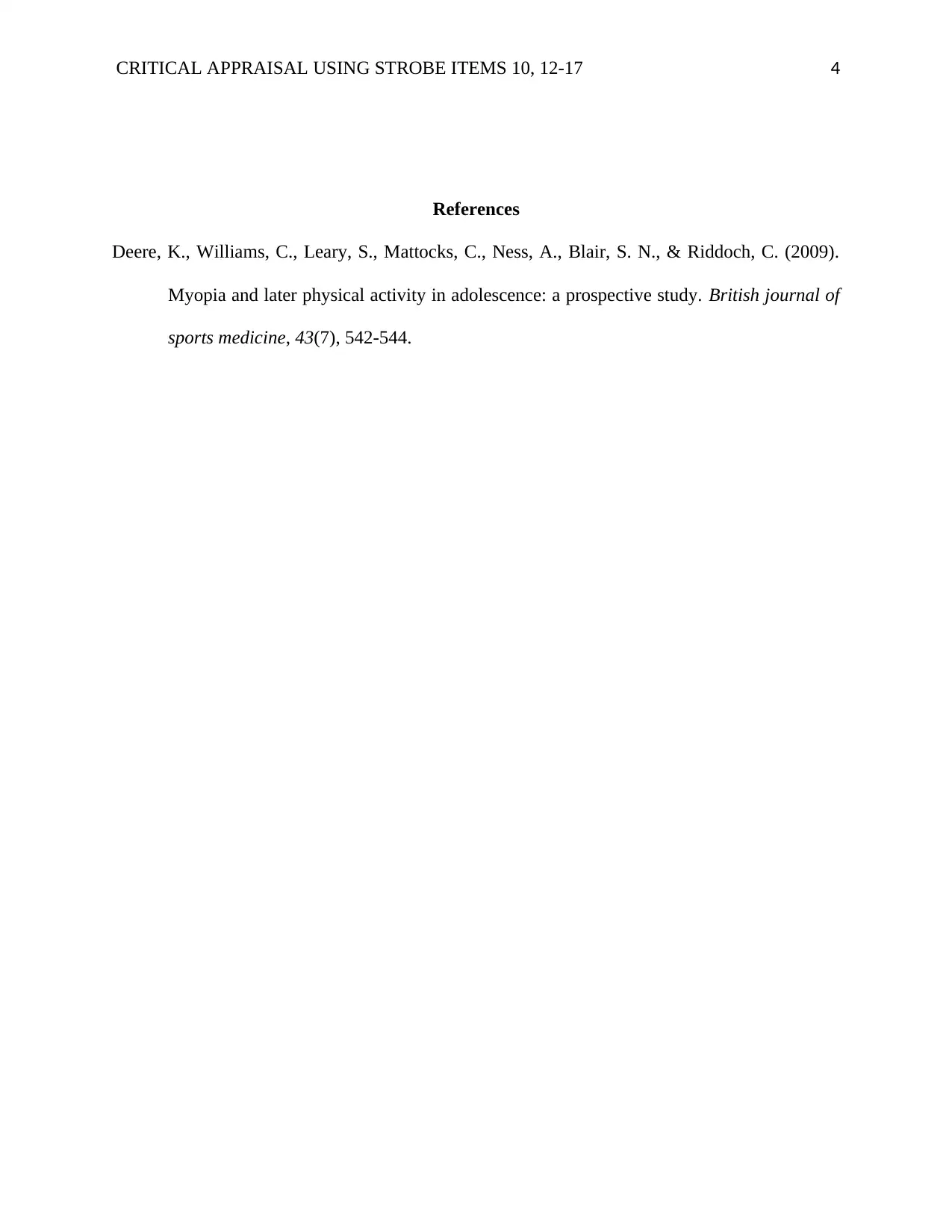Assessment of STROBE Checklist Items in a Health Research Paper
VerifiedAdded on 2020/04/15
|4
|660
|119
Homework Assignment
AI Summary
This assignment presents a critical appraisal of a health research study, specifically focusing on STROBE checklist items 10, 12-17. The analysis evaluates the study's size, statistical methods, participant characteristics, and outcome data. The author demonstrates how the study met the criteria for each item, providing specific examples from the research paper by Deere et al. (2009). The appraisal highlights the study's strengths, such as the clear explanation of study size and participant selection, and its effective presentation of results. The assignment underscores the importance of these STROBE items in ensuring the validity and generalizability of the research findings. The assessment covers the study's methodology, including the use of multivariable variation and the reporting of both unadjusted and adjusted estimates. The appraisal also examines the analysis of subgroups, enhancing the understanding of the sample. The student effectively demonstrates the importance of these items in a well-structured and informative assessment of the health research paper.
1 out of 4





![[object Object]](/_next/static/media/star-bottom.7253800d.svg)